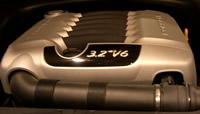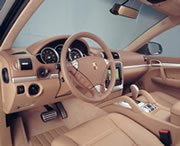|
There
had to be poets above the 60th parallel in Canada’s “true north”
or at least poetic souls. The rapids of the Yukon River, so they thought, resembled
wild horses tossing their manes. The new settlement at river’s edge was thus
christened Whitehorse.
Born of the Gold Rush that bridged the 19th and 20th centuries the town of Whitehorse
has managed to thrive through onrushes of people drawn by other than gold. Mid-century
the rush was military. World War II brought American army bases. The land bridge
across the Bering Strait that at the dawn of history might have carried Mastodons
and early settlers to a new world had long since shattered into islands. But Asia
in the 1940s was a source of hostile bombers and even isolated coastal raids on
Alaska’s coast. What was far distant across a broad Pacific at California’s
latitude grew progressively nearer as the globe sloped northward toward the pole.
This land of ice-spiked mountains, skinny straight trees and vast tundra was vulnerable.
The military came and set up camp.
Then a quarter of a century later came the oil rush, the building of a pipeline
to transport Prudoe Bay’s black gold outhward.
Each rush in its receding ebb left settlers - hardy souls who had fallen under
the spell of the vastness, the emptiness, the captivating mystery of northness.
The sky lit by the Midnight Sun in the borderless days of summer or splashed with
bright veils of the aurora borealis in the perpetual dim of winter enthralled
these few and they never went home.
The Yukon (always use the “the”) is a vast triangle with its flat side
matching most of Alaska’s. It’s more than twice the size of all of New
England, but boasts fewer souls than the town of Amherst, MA. Of the near 30,000
population some 22,000 live in the capital of Whitehorse. The territory’s
second city, Dawson City, was the capital until 1953. Its population nears 8,000.
The
latest rush to sweep the Yukon is ongoing, less all-encompassing and perhaps more
welcome by the residents. These rushees are tourists who come, summer and winter,
leave behind some money and then go home taking the odd musk ox pelt, a few gold
nuggets, evocative local crafts or unique T-shirts.
But mostly they take home memories of inimitable experiences because that’s
what Canada’s True North is about: true experiences not found in bowdlerized
theme parks or crowded national parks. Truth and its discovery in pursuit of silvery
fish or in trekking over spongy earth in the thrall of some of the boldest scenery
on earth. Or in winter’s spell mushing serenely behind a team of avid dogs
over thick-frozen lakes.
There’s much for visitors to do. What took this visitor to Whitehorse in
the midst of winter was to drive Porsche’s latest addition to its Cayenne
SUV line – one powered by the first V6 ever housed in a Porsche.
Many Porsche purists cringed at the thought of what they viewed as a desecration
– an SUV in the sacred house of premier sports car. But the V8 Cayenne S
and the Cayenne Turbo were none the less developed and released by the Zuffenhausen
management. Broadening the base of the company was necessary, they said, to guarantee
the survival of that storied marquee.
The new SUVs did exactly what was hoped for them. More than 60% of the Cayenne
S and the Turbo were bought by people who had never before owned a Porsche. The
experience was not an inexpensive one: the vehicles range in price from a base
$55,900 for the normally aspirated S to $88,900 for the twin turbo.
The world’s receptivity and the excellence of the Cayennes even convinced
some purists to lower their turned-up noses and slip into the dealership to drive
a Cayenne home.
But then came hints of the next unimaginable move by Porsche’s policy makers:
a V6 engine, essentially one from, among others, Volkswagen’s Touareg, VW’s
SUV developed in conjunction with Porsche, would be put into a new model of the
Cayenne.
Oh, the pain of it all!
What can they be thinking!
 |
Cayenne's
new 3.2-V6 engine. |
What
they can be thinking is let’s breathe some Porsche artifice over this engine,
extract some weight from the vehicle, lower the cost without cheapening the product
and we will then have a Porsche that those who have long aspired to the marquee
but failed the means test might actually buy. If entering the luxury SUV market
for Porsche was more or less a horizontal move then this new Cayenne would be
a vertical slide of importance. Not that Porsche planned a major push in that
direction, just a toe-testing in these new waters. No more than four or five thousand
units the first model year.
Since my Porsche-owning experience harked back to the rear-engine, air-cooled
1.5-liter days and some great fun racing the 550RS I suppose I would pitch my
tent in the purist camp. Anyway, I vociferously decried the blasphemy of a V6
in a Porsche. “That V6 is only just strong enough to move the heavy Touareg
satisfactorily; how will it meet the demands for performance of anyone wanting
a Porsche?”
In a day in Canada’s True North, on test courses laid out on two frozen lakes
and a drive through snow-matted back roads and a bare-as-Florida’s I-95 Alcan
Highway I discovered exactly how.
So hand me the sackcloth and ashes. I repent. I am thoroughly chastened. I am
impressed. I am charmed. I am a convert.
The new 2004 V6 Cayenne is called simply “Cayenne.” It is a totally
new personality differing from the S and the Turbo and its Touareg cousins. It
is more agile, more svelte because it had to be for the smaller engine. It is
a willing, friendly and capable machine. No, not head-in-the-backseat take off,
but good performance; in all, a well-tempered package. And its price starts at
$42,900. One hesitates to say “only” to that amount, but the price puts
this Cayenne in the area of a base Boxster. The Cayenne is a most serious value.
 |
Many buyers
will want some of the Porsche’s optional goodies likethe
navigation system, never known to bear bargain prices, so the Cayenne’s drive-home
price can approach the high forties rather rapidly. But just as you have a choice
not to “supersize” your fries, you can take the Cayenne in its base
dress and have a well-equipped leather-seated, five-passenger, four-door, four-wheel-drive
go-anywhere vehicle that still impresses the valet parker. And any other conscious
driver.
Driving this Cayenne brought home to me a simple fact: take two vehicles with
the same power to weight ratio and the lighter one will assuredly be more nimble,
more all-around pleasurable to live with. In an SUV “nimble” is rare
though nonetheless attractive.
How, I wondered, did the Porsche people manage to come up with such a pleasurable
package?
For a start the 3.2-liter V6 engine is considerably lighter than the V8 in the
other Cayenne models – some 250 pounds less that the turbo. Then there were
some trim details lightened or removed (nothing you’ll really miss). And,
too, the engine may be similar to that in the Touareg but the Porsche version
has more horsepower (247 to 220) and a new torque curve – one shaped like
a steep-sided mesa to give the same grunt over a wide range of revs (2500 to 5500.)
That’s 228 pound-feet, incidentally.
Porsche engineers gave the V6 a new intake system, two overhead cams and continuously
variable intake valve timing. The exhaust system was also reworked to make sure
the note was recognizably Porsche. It is.
Also added was an engine cooling system to assure that the Cayenne’s towing
capacity of 7716 pounds (!) could be achieved across a hot dessert track. It will
also all but climb trees and schuss a canyon while in fine control should the
outback call.
The transmission is a Tiptronic S six-speed. It can, of course, be left in automatic
for those preferring to not shift for themselves. (The transmission learns to
shift to suit your driving style, by the way.) In Tip mode the transmission can
come very close to duplicating the joys of a (clutchless) manual whether using
the gear lever or switches on the steering wheel.
Performance figures for this SUV include a 0-62 mph time of 9.7 seconds and a
top speed of 133. Fuel economy figures are 15 city and 19 highway. That coupled
with an ample fuel tank affords a welcome 430 miles between station stops. (Range
for me is almost more important than economy.)
Among the prizes standard on the Cayenne are some alphabet specials that are special
indeed: PSM and PTM stand for “Porsche Stability Management” and “Porsche
Traction Management.” These are standard. Optional are PCM (Porsche Communication
Management – navigation system and CD tuners) AOTP (Advanced Offroad Technology
Package – for the serious shunner of highways.)
When it comes to stability management Porsche’s PSM is less Big Brotherish
than that I’ve experiences from other manufacturers. PSM lets a driver approach
the ragged edge while at play before gently saving him from serious over cooking.
This is assistance without interference. It means a more intimate driver-vehicle
relationship and can engender a new level of the driving experience when road
grip is tenuous. With PSM it’s a matter of looking where you want to go,
allowing a simple steering input to follow the eyes’ lead and then feeding
in the fuel playing with the edges of acceptance. Faith has a part and practice,
too.
Porsche’s stability control and traction management are coconspirators in
the sporting experience, not frowning school marms bent on curbing the exuberance.
What fun it is.
And yes, the Cayenne with the V6 is a Porsche. What’s more, one that’s
practical and affordable.
Click here for more information on the Porsche Cayenne.
|